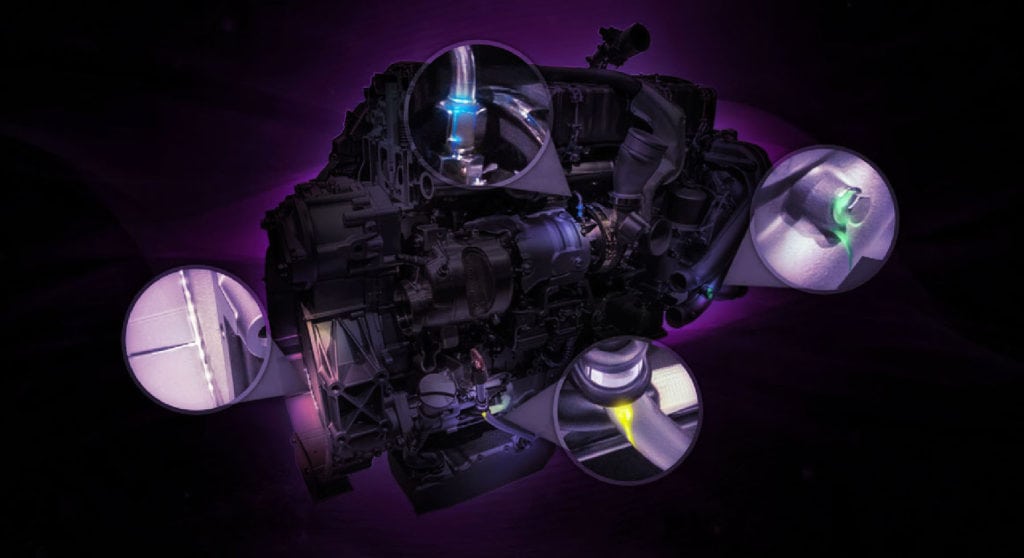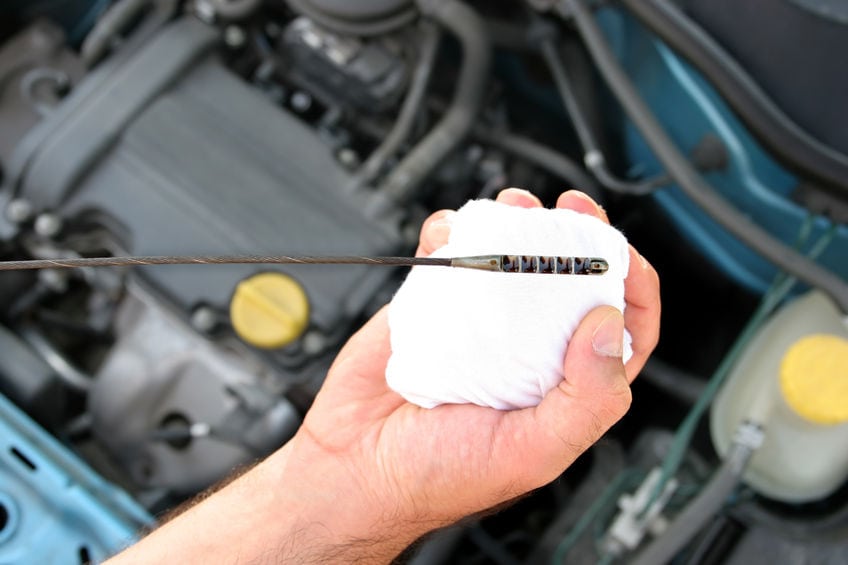Your automobile needs to be serviced on a regular basis. If not, critical parts could fail – placing at risk the time and money you put into your vehicle. One of the first steps to ensuring your vehicle is kept in good working condition is to keep an accurate record of all your maintenance needs. In addition, it’s important to familiarize yourself with your vehicle. One of the easiest and most accessible ways to make certain your vehicle is operating in top-notch condition is by periodically checking the various systems of your car.
Below is a short how-to guide for better understanding your vehicle and its critical systems. A lot of information can be gleaned through visual inspection. And, luckily, most your vehicle’s critical systems can be accessed within a matter of minutes.
Note: If you are unfamiliar with your vehicle’s systems, allow the vehicle to cool before inspection. If you are hesitant about checking your vehicle’s systems, seek professional service.
Checking the Brake Fluid: Always be aware of the amount and the quality of your brake fluid. To check your brake fluid, open the brake fluid reservoir tank and look inside. Check the amount of brake fluid in the reservoir. Measurement lines on the container indicate the correct level of brake fluid. Next, check the condition of the brake fluid. If the color of the fluid is oily or looks tainted, this an indication your vehicle needs to be serviced right away.
Checking the Brake Pads and Brake Rotor: There are simple, everyday checks you can make to ensure your brakes are operating properly. While you’re driving your car around, listen to the sound your brakes make when you apply pressure to the brake pedal. Your brakes will squeal if the brake pads are deteriorating. If you hear your brakes squealing, bring your vehicle to an auto mechanic to have the vehicle inspected. Vibrations or fading brake power are also indications of a brake system in need of maintenance. To check the condition of your rotor, simply look on the outside of your wheel system. If there are striations or heavy grooves on the surface of the brake rotor, it is time to have the rotor replaced. Brake pad wear needs to be properly measured. A professional auto mechanic can dissemble your brake system to guarantee the quality – or lack thereof – of your brake pads. Remember: as a driver, it is your responsibility to monitor your braking system.
Checking the Power Steering Fluid: If you notice any changes in how your vehicle maneuvers, there may be an issue with your power steering system. This could be stemming from the amount or operating condition of your power steering fluid. Bring your vehicle to a specialist to check the condition of your power steering system if you notice any changes in your vehicle’s maneuverability. If you do not properly service your vehicle, you could be liable for negligently operating and maintaining your vehicle. If this happens, the operator or owner of the vehicle could be personally liable for tickets – or worse – an accident. Insurance companies may not cover an accident if it is found you haven’t been properly maintaining your vehicle.
To check your power steering fluid, find the power steering fluid cylinder. Check the amount of power steering fluid and then check the quality of the fluid. If the power steering fluid is dark or your fluid level is low, it is time to bring your vehicle to an automotive professional for servicing. Leaks in your power steering system tend to occur at the connections and joints. Finding leaks can often be difficult without the right tools or experience. If you have added power steering fluid to your system – but the fluid continues to deplete – this is an indication that there is a leak within your vehicle’s power steering system.
Tracerline offers a variety of ultraviolet fluorescent leak detection dyes and kits for all of your vehicle’s critical, fluid-based systems. If you find the fluid level in one your vehicle’s systems to be low – or if the fluid keeps depleting – use Tracerline’s patented leak detection dyes to help you or your mechanic find the leak area quickly and accurately. Simply add the appropriate dye to the system, run the system for a short period of time, and scan the system with one of Tracerline’s top-quality, ultraviolet leak detection flashlights. If the dye escapes the system, the leak area will fluoresce brightly when scanned.

Application of ultraviolet leak detection dyes to multiple systems in your vehicle. Photo: © 2017 Tracer Products < https://tracerproducts.com/>
Checking the Coolant: If your car’s Check Engine light is ON, it’s important not to ignore it and to get things checked out right away. Additionally, always keep an eye on the temperature gauge on your dashboard. This small gauge is often overlooked. But, from time to time, check the gauge and be familiar with the usual temperature your vehicle operates at. If any changes happen – suddenly or over longer periods of time – that may be an indication that there’s an issue with your vehicle’s cooling and heat management system.
Your coolant system is comprised of several parts that are used to help keep your car cool when operating. Keep in mind all gas, diesel, and biofuel engines use controlled combustion to generate the energy that moves your 2+ ton vehicle. Whether it’s from zero-to-sixty on the highway or running out to pick up milk in the middle of the night, your engine will quickly overheat if your cooling system isn’t working appropriately.
To check your coolant, refer to this article: Beware: No Heat Means No Coolant.
Checking the Engine Oil: Your engine oil acts as a lubricant between the pistons and the surface of your vehicle’s cylinders. This constant friction eventually wears down the cylinders and pistons, affecting the timing of the pistons and the overall operation of your vehicle. It is imperative that the quality of your vehicle’s engine oil is maintained. Without this critical operational fluid, the damage to your engine will be significant. Also, take steps to ensure the oil filter is changed and maintained throughout the lifetime of the vehicle.
Open your car’s hood and look for the engine oil dipstick. The dipstick can tell a lot about the condition of your engine oil. Pull the dipstick from the engine block. Wipe the dipstick clean. Reinsert the dipstick. Pull the dipstick out and determine the amount of oil in the system. Check your owner’s manual and the gradations indicated on the lower portion of the dipstick.

Checking the level and quality of your engine oil. Photo: © 2017 iStockphoto LP. <http://www.istockphoto.com>
Check the quality of the oil as well. The oil should look relatively clean. No particulates should be seen in the oil. Examine the engine oil color. If your engine oil is dark and dirty, it’s time to have your vehicle serviced. If there isn’t enough engine oil in the system, add the appropriate amount of oil to the system.
Checking the Transmission Fluid: While you’re under the hood, check your transmission fluid. The transmission fluid dipstick is usually brightly colored and has a warning/identification label inscribed on the handle. Transmission fluid is made from a variety of synthetic liquids and oils with added chemical properties such as detergents, rust preventatives, and lubricants. It has a distinctive reddish hue.
Transmission fluid needs to be routinely checked. With age, the transmission fluid collects contaminants and loses effectiveness. The transmission is responsible for shifting your vehicle into different gears, or different intensities of operation and direction. It is a critical part of your vehicle.
If you are uncertain about checking the fluids in your vehicle’s systems, the one thing you can do is simply keep and accurate and up-to-date maintenance record. Check the recommended servicing instructions in your vehicle’s operational manual and consult with your local automotive professional. He or she can help keep an accurate maintenance record and provide any advice you may need.
About Tracer Products:
Headquartered in Westbury, New York, Tracer Products has been at the forefront of leak detection technology for over 60 years. Tracerline fluorescent dyes are so effective they have been successfully installed in more than 205 million vehicles to date, and are OEM approved by Acura, Audi, BMW, Honda, Ford, GM and Volkswagen, among others. In addition to fluorescent dyes, the company offers a full line of rugged, top-quality, award-winning leak detection lamps, diagnostic tools and dye injection systems used in automobiles and heavy duty vehicles. Tracer Products is dedicated to upholding high standards in design manufacturing, ensuring customer satisfaction and in continuing to lead the world in leak detection solutions.





